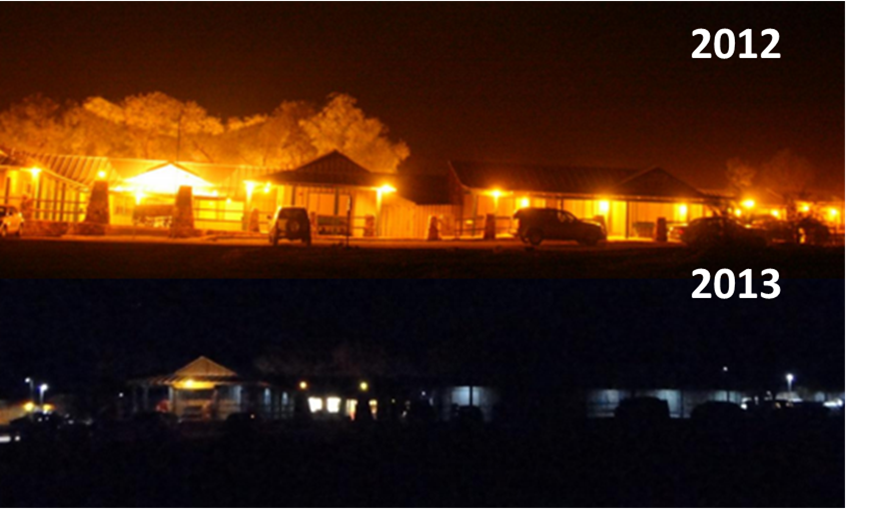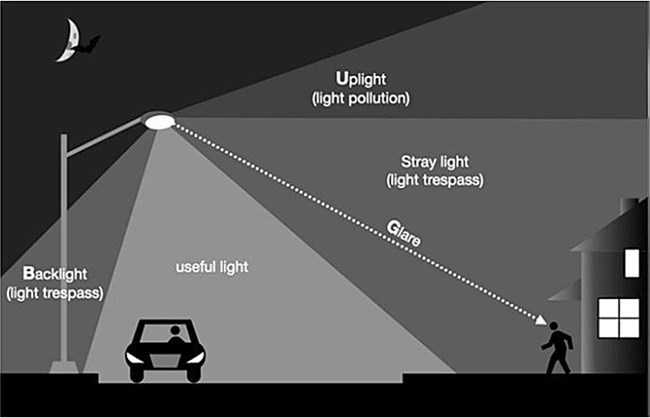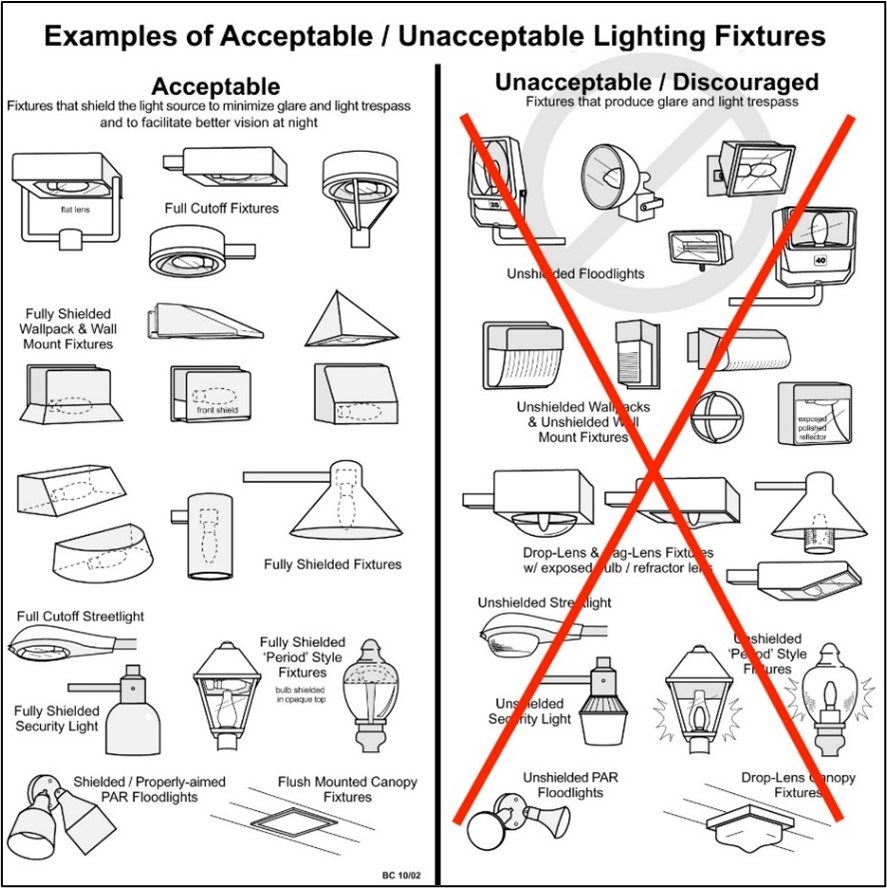
The National Park Service recognizes that natural lightscapes and dark night skies are critical for natural and cultural resources, the visitor experience, and astronomy-based recreation and interpretive programming. National Park Service managers and staff work to protect natural lightscapes by minimizing light that emanates from park facilities, and seek the cooperation of park visitors, neighbors, and state and local governments to prevent or minimize light pollution that can affect park ecosystems (NPS Management Policies 4.10). Outdoor lighting often obscures natural darkness. To reduce the effects of light pollution and restore natural lightscapes in national parks, working with partners and gateway communities, the national park service developed a set of science-based principles for sustainable outdoor lighting. Further information regarding specific effects that light pollution can have on wildlife and other natural and cultural resources, as well as human health and visitor experience can be found on our Night Sky as a Resource and Value page
Benefits of sustainable outdoor lighting
When properly designed and installed, park friendly outdoor lighting has many benefits, including but not limited to:- Improves energy efficiency and Reduces carbon footprint
- Preserves night skies and Enhances wilderness character
- Provides for basic human safety and Enhances human health
- Enhances historic authenticity and Reduces operational and cyclic maintenance costs
- Minimizes impacts to wildlife and visitors
- Provides opportunities for economic development through astronomy-based tourism

Sustainable outdoor lighting principles
To recognize the benefits of sustainable outdoor lighting, NPS recommends the following basic principles.
1. Ensure the Lighting is Necessary – the first question in considering what type of outdoor lighting is appropriate for an area or structure/facility in a national park is whether there even needs to be a light at all. In many cases, reflective tape, paint, or reflective surfaces can be used instead (this is a good option for roadways, parking areas, and trails where people will have headlamps, flashlights, and cell phone lights).
2. Light Only Where Needed – When lighting is necessary, identify the task area that needs to be illuminated. Lights should be selected and installed with proper height and light distribution to prevent light spill or trespass beyond the task area. LED technology allows for a wide range of light distributions and control making it possible to tailor lighting to a specific task.
3. Use Recessed and Fully Shielded Fixtures – A fully shielded or full cut-off fixture emits light downward onto the task area and not into the sky. A shielded fixture ensures the light source (bulb or LED) is recessed within the housing so no portion of the bulb is visible at eye level. Globes or diffusers that hang below the light fixture emit a great deal of light upward into the sky causing an inordinate amount of glare that degrades visual performance and should be avoided. Lights that are directed laterally such as floodlights should also be avoided.
4. Light Only When Needed – Fixtures that include or can accommodate lighting controls such as timers, motion detectors, and dimmers ensure the appropriate amount of light is used when needed. These technologies can increase energy efficiency and reduce impacts to park natural and cultural resources.
5. Minimum Light Level Necessary – The amount of light needed to safely illuminate an area for a given task in a park is often much lower than that needed for urban environments. Increasing light output does not necessarily equate to a safer nighttime environment and can often reduce visibility and therefore safety.[1] Consequently, it is important to use the lowest light output for a task. Light output can be measured in Lumens- the unit of measurement used to specify the intensity or brightness of LED bulbs. LEDs are highly efficient and use significantly fewer watts to achieve equal lumen outputs of older light types, therefore wattage is no longer used as a measure of brightness.
6. Use LEDs in Warm Colors – For many outdoor uses, warm white colors are appropriate and readily available from commercial retailers. 2700 Kelvin can provide excellent color rendition while minimizing unintended impacts. For sensitive environments, 2200k or direct amber options may be appropriate. LEDs with color temperatures greater than 2700k emit a moderate to significant proportion of short wavelength (blue) light that may appear brighter than warm lights. This may reduce safety by creating discomfort glare -and impacting dark-adapted vision. Blue light may also adversely affect both human and wildlife health and behavior.
[1] The effect of reduced street lighting on road casualties and crime in England and Wales: controlled interrupted time series analysis | Journal of Epidemiology & Community Health (bmj.com)

Partial list of where to apply principles:
- Park housing, roads, campgrounds, marinas, visitor centers and contact stations, amphitheaters, flag poles, lighthouses, front-country trails, fee collection stations, historic structures, docks, inholdings, vacation cabins or special park uses.
- Parking areas, office buildings, research centers
- Communication towers (cellular, television, radio)
- Signs (park entrance signs, roadways, and directional signing, etc.).
- Wayside exhibits, bulletin boards, and other interpretive/informational installations
References
- Artificial Night Lighting and Protected Lands: Ecological Effects and Management Approaches (Revised August 2017). Natural Resource Report NPS/NRSS/NSNS/NRR—2017/1493
- Dan Duriscoe, "Preserving Pristine Night Skies in National Parks and the Wilderness Ethic," The George Wright Forum, 18:4, 2001.[64 KB PDF].
- Steinbach, Rebecca, et.al, Journal of Epidemiology and Community Health, 2015. The effect of reduced street lighting on road casualties and crime in England and Wales: controlled interrupted time series analysis | Journal of Epidemiology & Community Health (bmj.com)
Last updated: January 3, 2024
